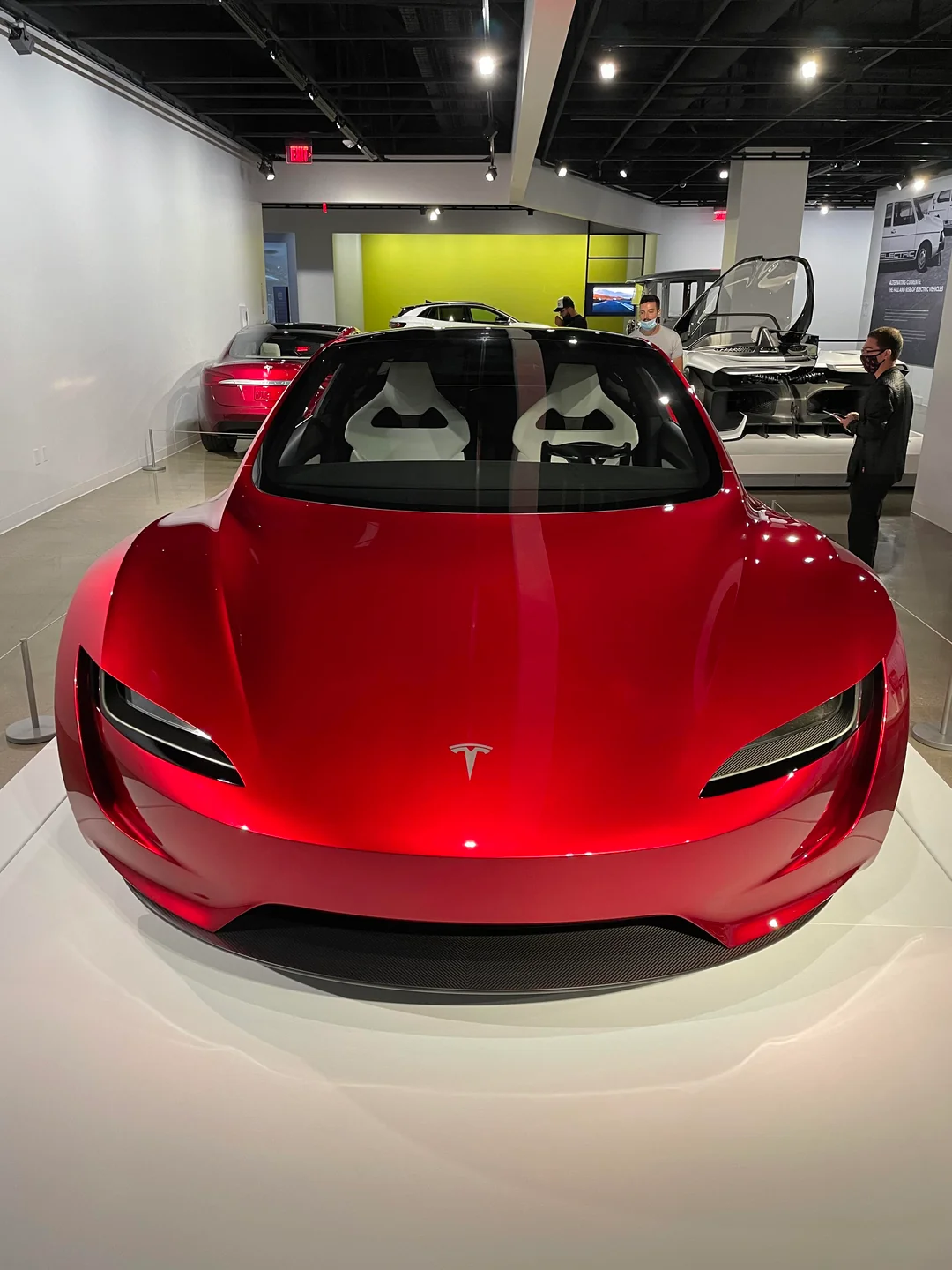The second-generation Tesla Roadster: A Critical Analysis
The Tesla Roadster has always been a symbol of innovation, the harbinger of a future where electric vehicles (EVs) dominate the roads. Its first iteration marked Tesla’s bold foray into the automotive world, and now, its successor promises to redefine the boundaries of EV performance. The image presented gives us a glimpse of the Roadster’s new form, a striking red vision that embodies Tesla’s ambition and technological prowess.
Design Aesthetics
The Roadster’s design, as captured in the image, is a testament to Tesla’s commitment to sleek and futuristic aesthetics. It’s a departure from the overly aggressive stylings of many contemporary supercars, opting instead for a clean and minimalist approach. The car’s lines are smooth and coherent, leading to a harmonious profile that is both elegant and dynamic. The bold red color not only catches the eye but also serves as an emblem of the car’s fiery spirit and performance capabilities.
Performance Expectations
Tesla has made bold claims about the Roadster’s performance, suggesting figures that would place it among the fastest cars in the world. The anticipation for a car that can deliver supercar-beating numbers while running solely on electric power is palpable. However, the expectations are tempered by the company’s past challenges in meeting production targets and claimed performance statistics.
Manufacturing Quality Concerns
The concerns regarding Tesla’s build quality are not unfounded. As the image suggests, the Roadster embodies cutting-edge design, yet the real test lies in its execution. Observers have noted inconsistencies in panel gaps and overall finish in other Tesla models, which raises questions about the Roadster’s final build quality. For a vehicle that will likely carry a premium price tag, the expectation for impeccable craftsmanship is non-negotiable.
Competition and Market Context
While Tesla has been a trailblazer in the EV market, it now faces stiff competition from established automakers who are introducing their own luxury EVs. The Porsche Taycan, for example, has been praised for its build quality and driving experience, setting a high bar for the Roadster to meet. The comparison becomes even starker when considering interior quality, where competitors are leveraging their experience in luxury car production.
The Enthusiast’s Perspective
For car enthusiasts, the shift to EVs is often met with a mix of excitement and skepticism. The Tesla Roadster’s promise of unparalleled performance is intriguing, yet many still hold a torch for the raw, mechanical charisma of internal combustion engines. The dialogue between the old and the new is vividly represented in the polarized opinions on the Roadster’s design and technology.
Affordability and Practicality
Although not designed to be a mass-market car, the Roadster’s positioning as a high-performance EV sets an aspirational benchmark for what electric cars can achieve. Its significance goes beyond just sales figures; it’s about proving that EVs can be desirable and exhilarating, not just practical and environmentally friendly.
Conclusion
The Tesla Roadster, with its striking design and ambitious performance goals, stands as a beacon of what the future of electric sports cars could look like. The image presented speaks to the potential of this vehicle to not only turn heads but also to set new standards in the automotive industry. However, Tesla must navigate the challenges of quality control and market competition to ensure that the Roadster lives up to its promise. As with all pioneering technology, the path to success is fraught with hurdles, but the journey itself can be as exciting as the destination. The anticipation is high, and the automotive world watches with bated breath to see if Tesla can deliver on the dream encapsulated in the red allure of the new Roadster.
